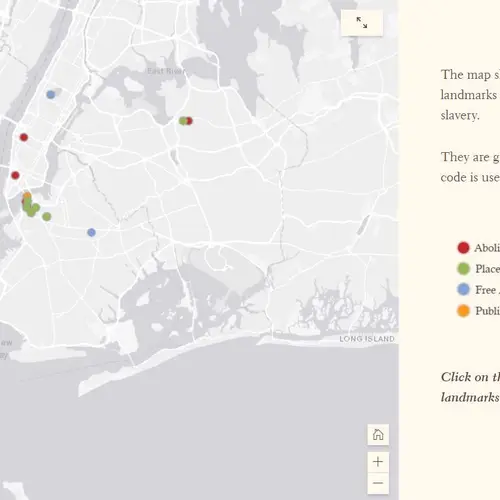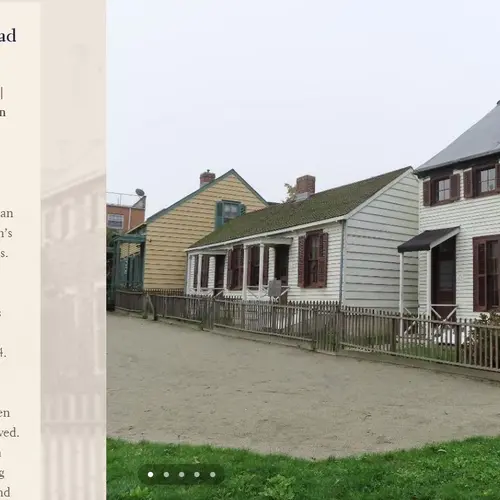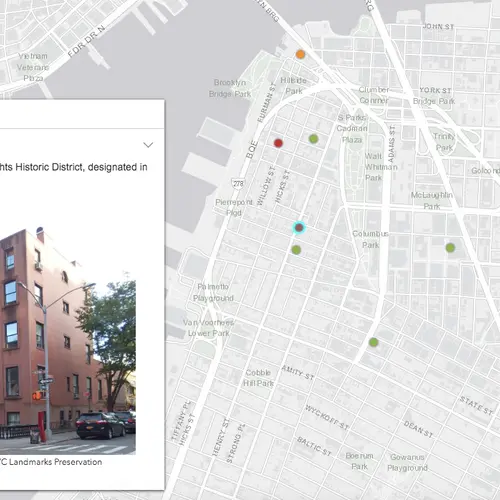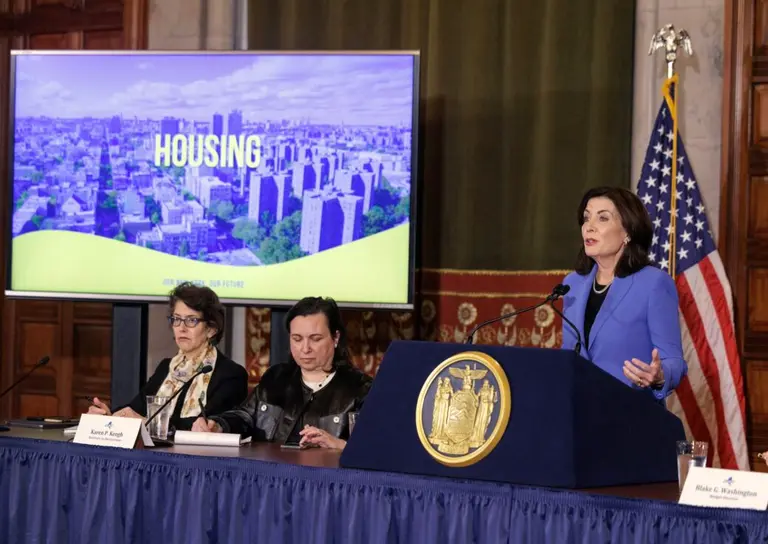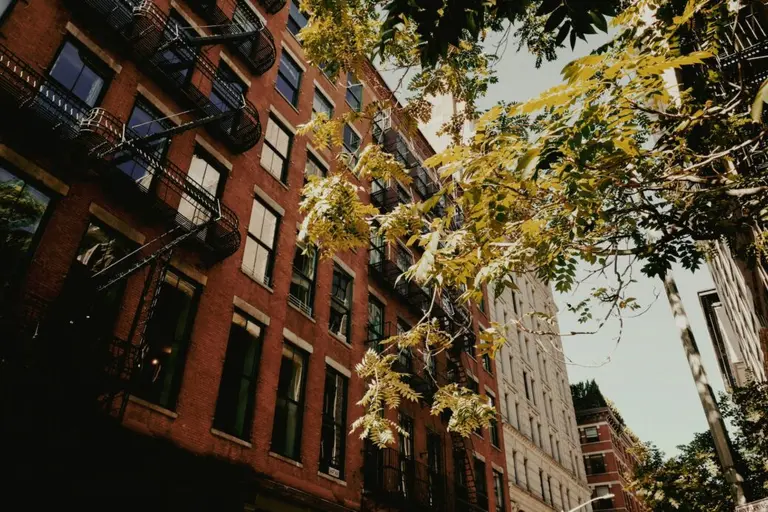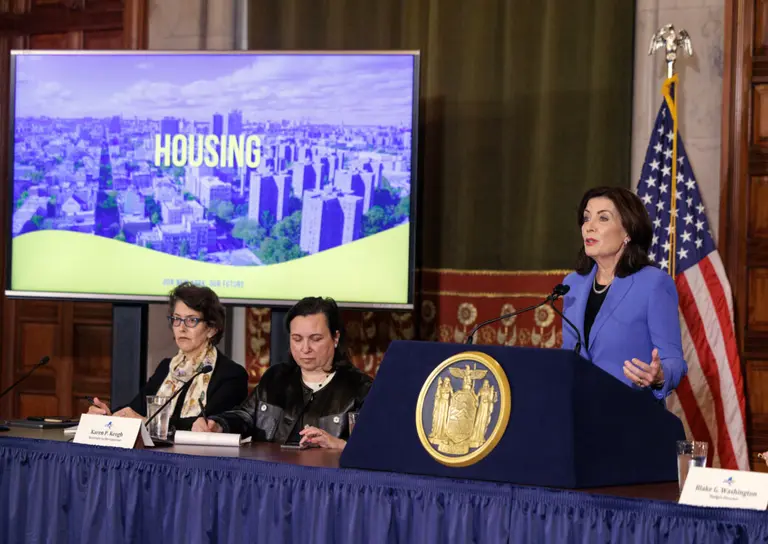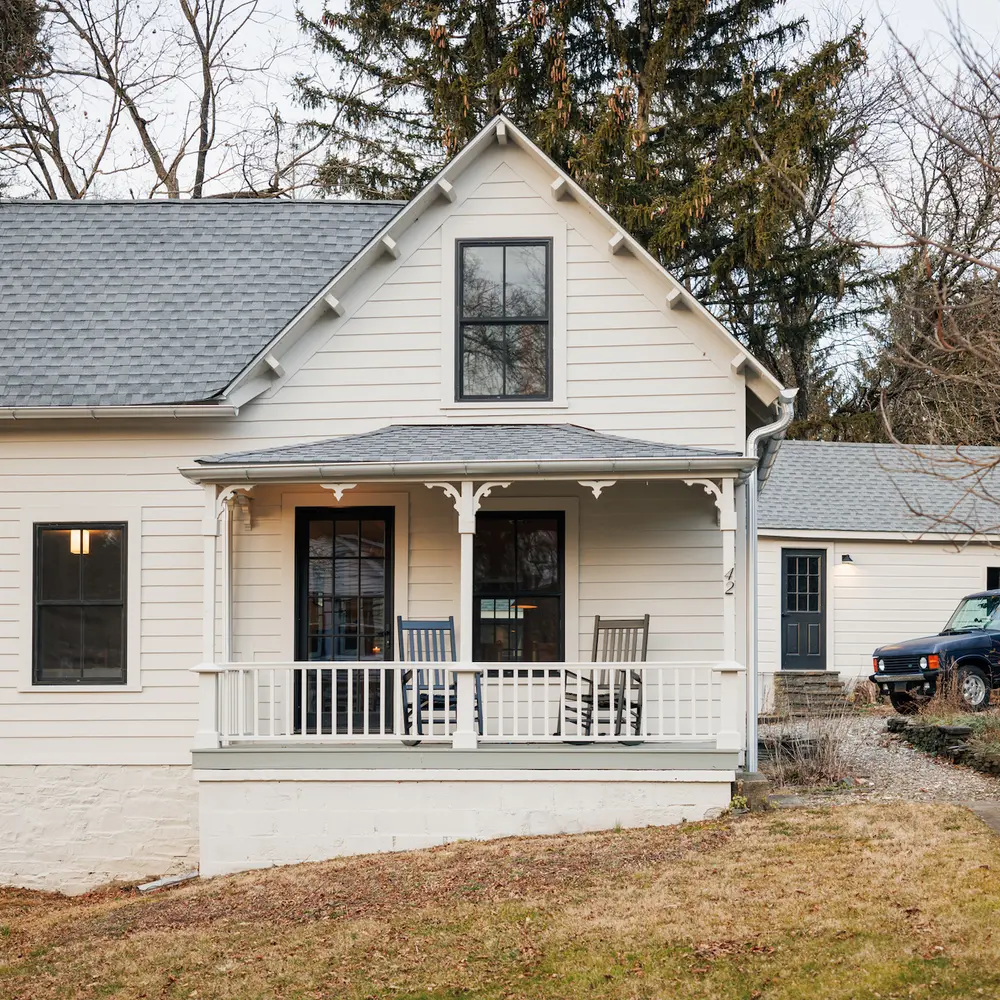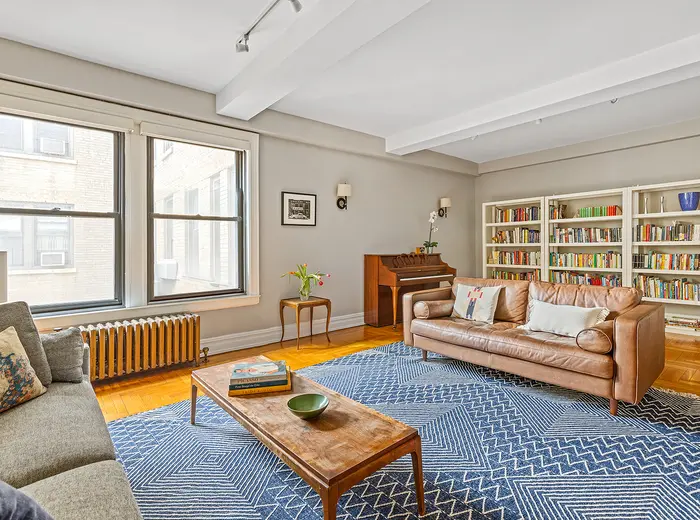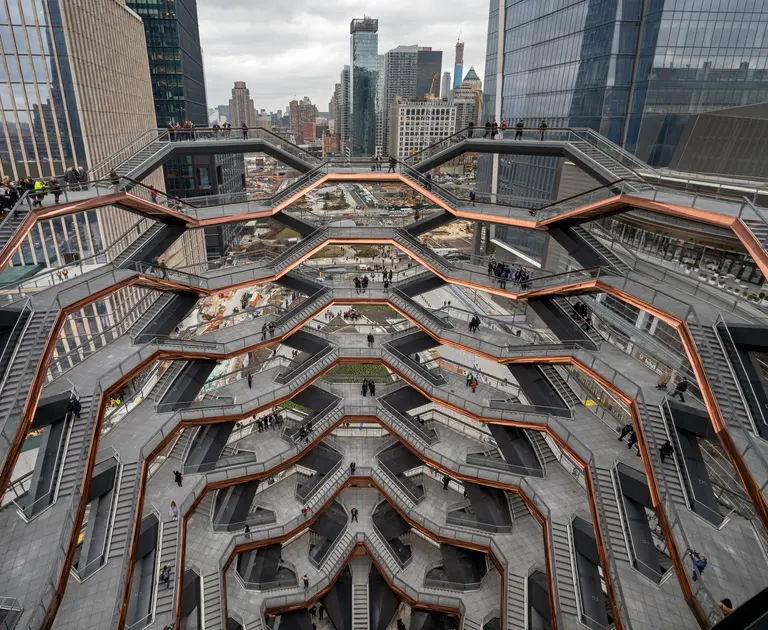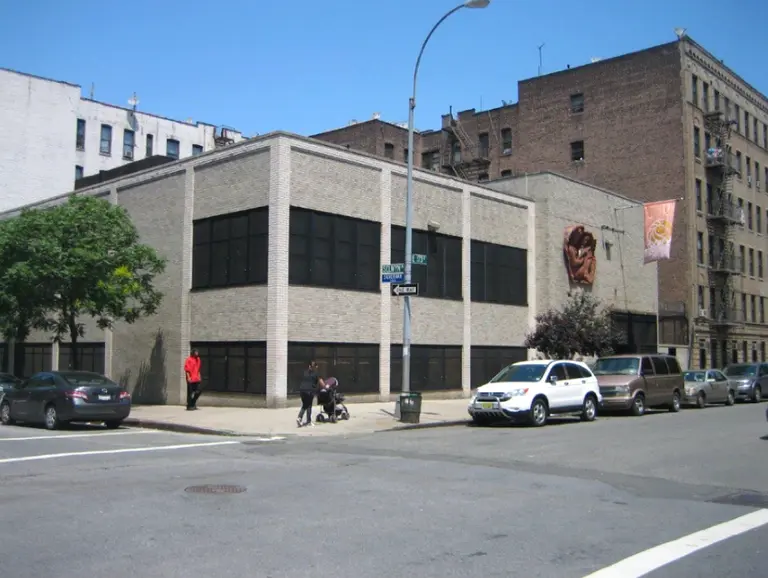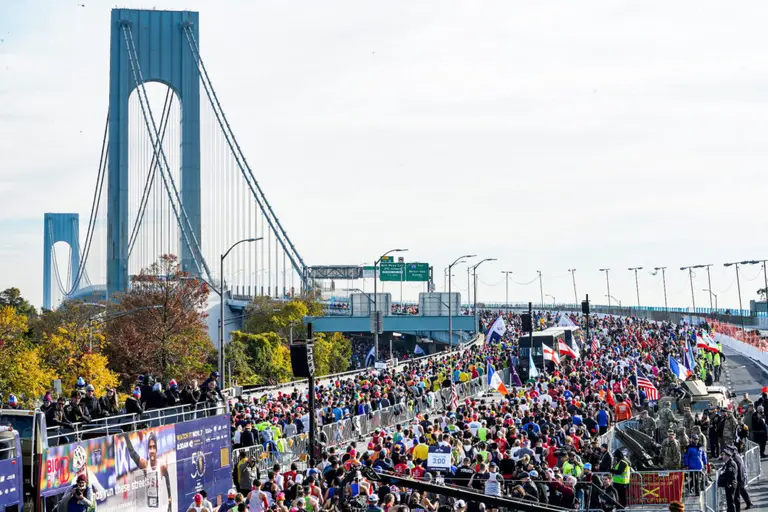Find landmarks of the anti-slavery movement in NYC
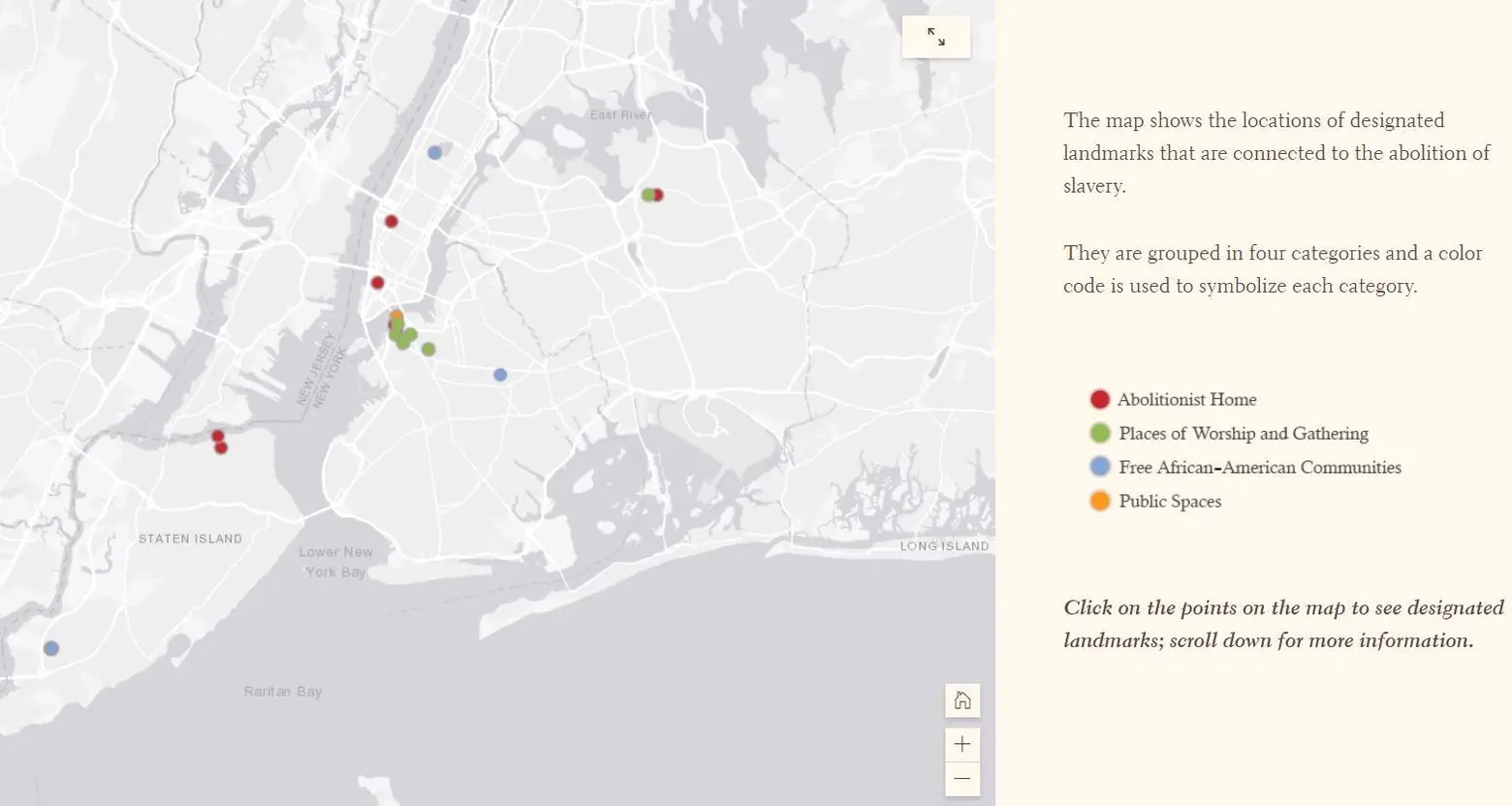
Screenshot of the map courtesy of the Landmarks Preservation Commission
For roughly 200 years, between 1626 and 1827, New York City was home to more enslaved Africans than almost every other city in the country. But after abolishing slavery nearly 40 years before the nation, the city became a major player of the national abolitionist movement, housing anti-slavery activists and organizations, as well as many stops on the Underground Railroad. Now 400 years after the first enslaved Africans arrived in the United States, the Landmarks Preservation Commission released this week an interactive story map highlighting designated city landmarks tied to the abolitionist movement.
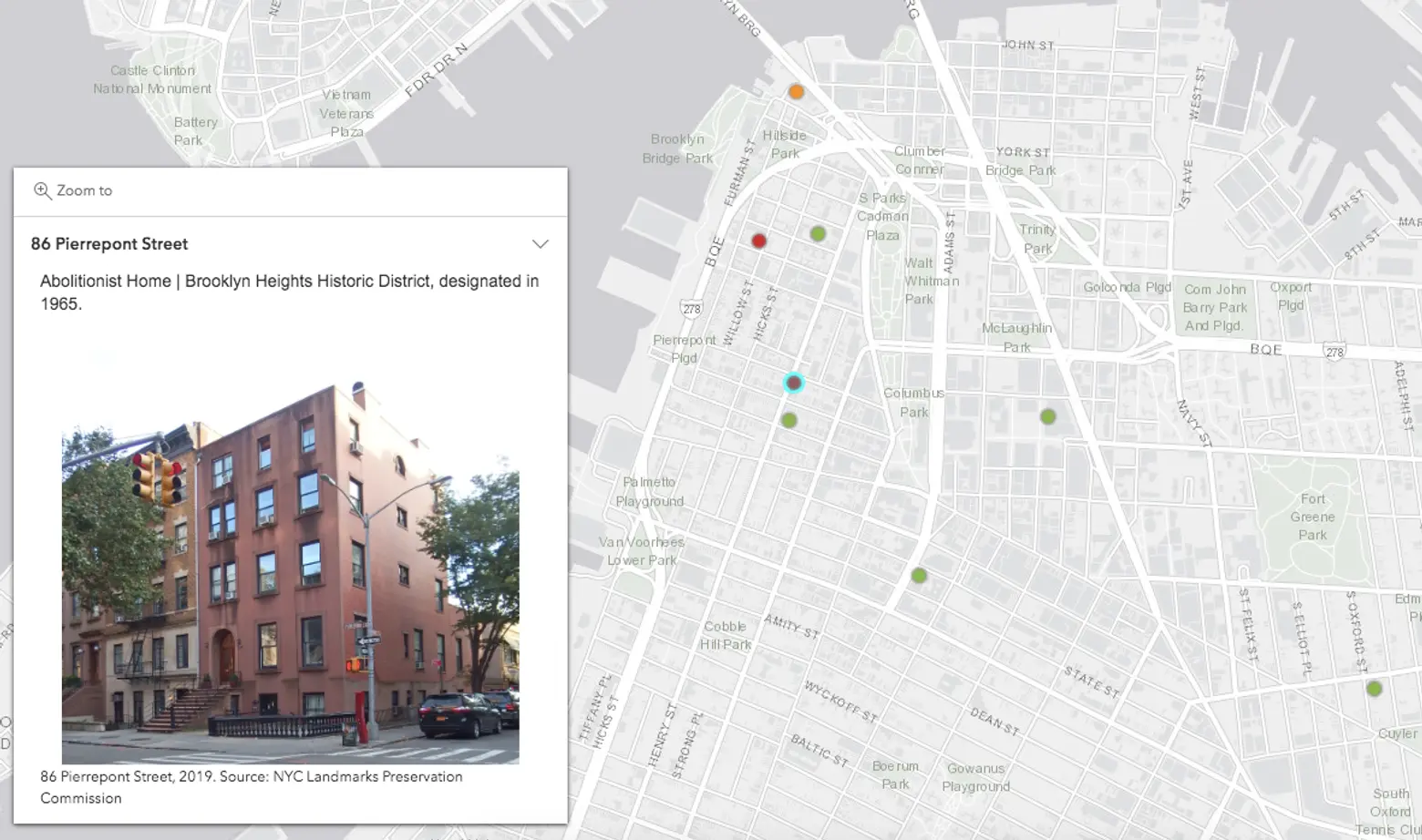
“The designated landmarks highlighted in this story map form an impressive collection of physical spaces that help tell the story of abolition and the Underground Railroad in New York City,” Sarah Carroll, LPC chair, said in a press release. “As we reflect on New York City’s legacy of both slavery and abolitionist activities, I hope New Yorkers will be inspired by the stories of abolitionists who took great personal risks to house enslaved individuals and to publicly advocate for abolition.”
The story map, New York City and the Path to Freedom, shows how the history of the abolitionist movement in New York by examining activities at now-designated landmarks across the five boroughs. The locations are marked as either an abolitionist home, a place of worship and gathering, a free African American community, and public spaces.
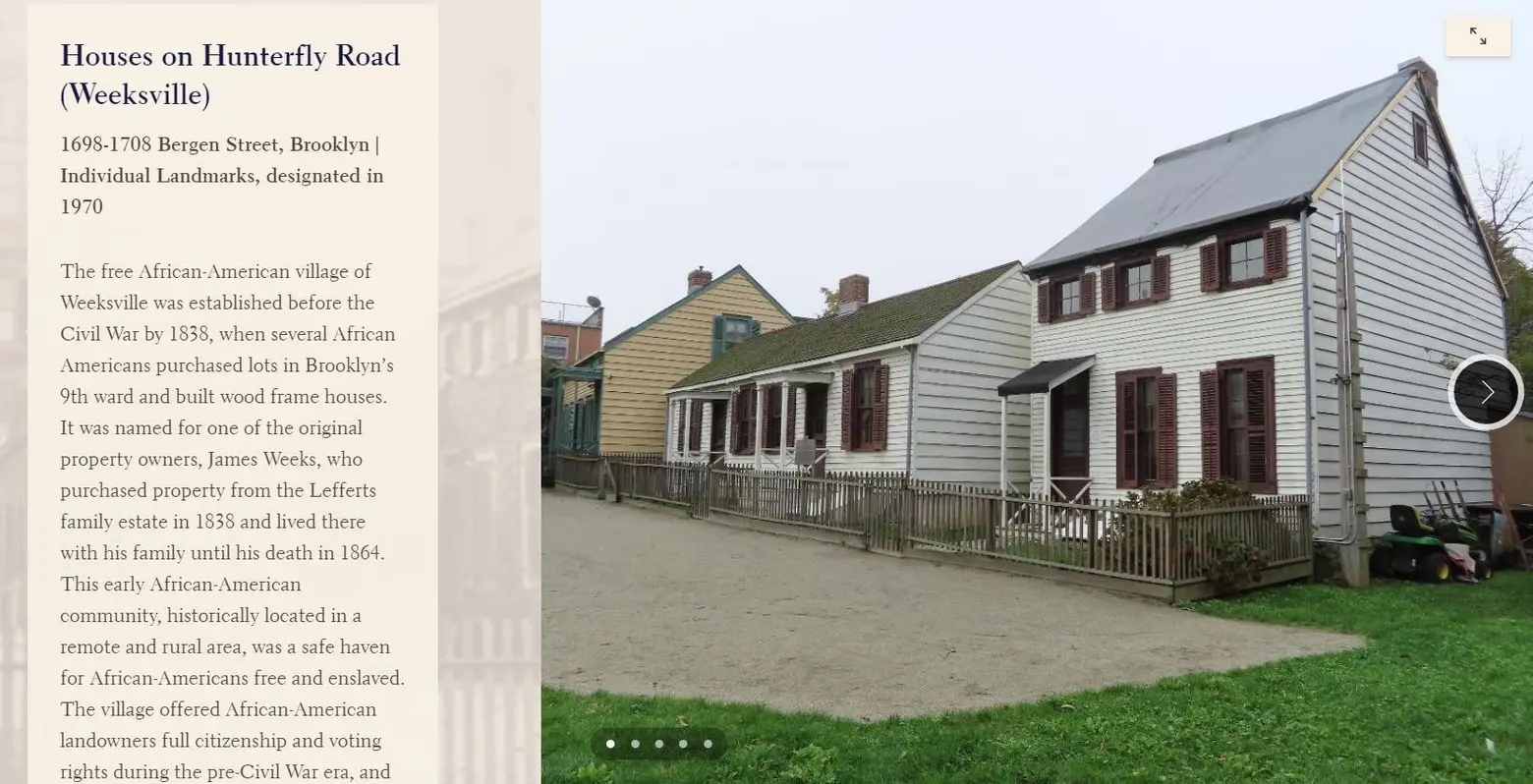
Brooklyn became a major hub of anti-slavery activity due to its large population of free African Americans and waterfront location, according to the LPC. The map lists nine historic, designated sites in the borough, including the Plymouth Church in Brooklyn Heights, considered the “Grand Central Depot” of the Underground Railroad, and the House on Hunterfly Road in Weeksville, home to one of the largest free black communities in Antebellum America.
For significant sites in Manhattan, LPC maps the Lamartine Place Historic District, tied to the 1863 draft riots and the Underground Railroad, 2 White Street, the home of famed abolitionist Theodore Wright, and Central Park’s Seneca Village, the first community of free African American property owners.
Two designated landmarks in Queens made the map: Friends Meeting House, the oldest house of worship in the city which hosted meetings about the abolitionist movement, and the Bowne House, home of religious freedom advocate John Bowne and nine generations of his family who fought against slavery.
And on Staten Island, where many free African Americans settled during the early part of the 19th century, the commission marks three landmarks of importance, including 69 Delafield Place House, the George William and Anna Curtis House, and remnants of the Sandy Ground community.
Learn more about these sites and the history behind them by exploring the story map here.
RELATED:
